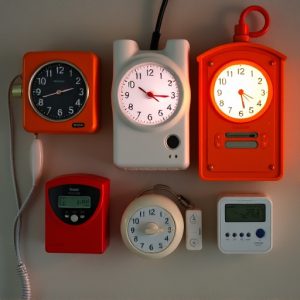Personal Security Alarms: Features, Battery Life & Wearable Systems
Wearable personal security alarms offer immediate assistance and discreet protection with a single b…….
Wearable personal security alarms offer immediate assistance and discreet protection with a single button press. These devices send distress signals with location updates, crucial for outdoor activities or delayed emergency response. Key components include loud alarm sounds, LED lights, and energy-efficient batteries that last weeks or months. Manufacturers use power-saving techniques and innovative charging methods to address battery life concerns, making wearable panic alarms an essential tool for personal security.
In today’s world, wearable security systems with panic features offer unparalleled personal protection. This article delves into the essentials of these innovative devices, exploring their basic functionalities and significant advantages. We dissect key components that contribute to a personal security alarm’s effectiveness, emphasizing its versatility and crucial features. Furthermore, we provide practical tips for optimizing battery life in wearable panic alarms, addressing a common concern among users. By understanding these aspects, you’ll be better equipped to choose and maintain a reliable personal security solution.
- Understanding Wearable Security Systems: The Basics and Benefits
- Key Components of a Personal Security Alarm: Functionality and Features
- Optimizing Battery Life in Wearable Panic Alarms: Tips and Considerations
Understanding Wearable Security Systems: The Basics and Benefits
Wearable security systems, often in the form of personal alarms or safety devices, have emerged as a powerful tool for enhancing individual safety and peace of mind. These innovative gadgets are designed to offer discreet yet effective protection, especially in situations where quick response is crucial. The basic concept revolves around integrating security features into portable, wearable items like wristbands, necklaces, or even clothing.
The primary benefit lies in their convenience and accessibility; users can activate a personal security alarm with just a press of a button, ensuring immediate assistance during emergencies. These devices typically boast long-lasting battery life, allowing wearers to stay protected without constant recharging concerns. With advanced technology, they can send out distress signals to emergency services or pre-programmed contacts, providing real-time location updates. This capability is particularly valuable in outdoor activities, travel, or situations where help might be delayed.
Key Components of a Personal Security Alarm: Functionality and Features
A personal security alarm, or wearable panic button, is a compact yet powerful tool designed to offer immediate assistance in case of emergencies. Key components define its effectiveness and usability. One of the most vital aspects is the alarm’s functionality, which includes loud and distinctive sounds to draw attention and alert nearby people. These alarms often incorporate LED lights for added visibility, ensuring quick identification in low-light conditions or complete darkness.
Battery life plays a significant role in the reliability of personal security alarms. Users need devices that provide prolonged power, allowing them to rely on their alarm during outdoor activities or extended periods away from home. Advanced batteries and energy-efficient designs enable these wearables to function for weeks or even months between charges, ensuring users always have access to emergency protection without constant battery management concerns.
Optimizing Battery Life in Wearable Panic Alarms: Tips and Considerations
In the quest for enhanced personal security, wearable panic alarms have emerged as a reliable tool, offering peace of mind on the go. However, one of the primary concerns users often voice is optimizing battery life, especially in scenarios where quick access to these devices is crucial. To address this challenge, manufacturers and designers are implementing innovative strategies to conserve power without compromising functionality.
Tips for extending battery life include adjusting settings like brightness and vibration intensity, enabling power-saving modes during periods of inactivity, and utilizing low-energy communication protocols for alerts. Regular software updates can also play a role by refining energy management practices. Additionally, the integration of solar charging or innovative energy harvesting technologies promises to revolutionize wearable security systems, ensuring these devices remain operational when it matters most.
Wearable security systems with panic features offer a revolutionary way to enhance personal safety. By understanding the basic components, functionality, and optimal battery life management, users can leverage these devices effectively. A personal security alarm, with its compact design and powerful capabilities, becomes an indispensable tool in today’s world, ensuring peace of mind and quick response during emergencies.


